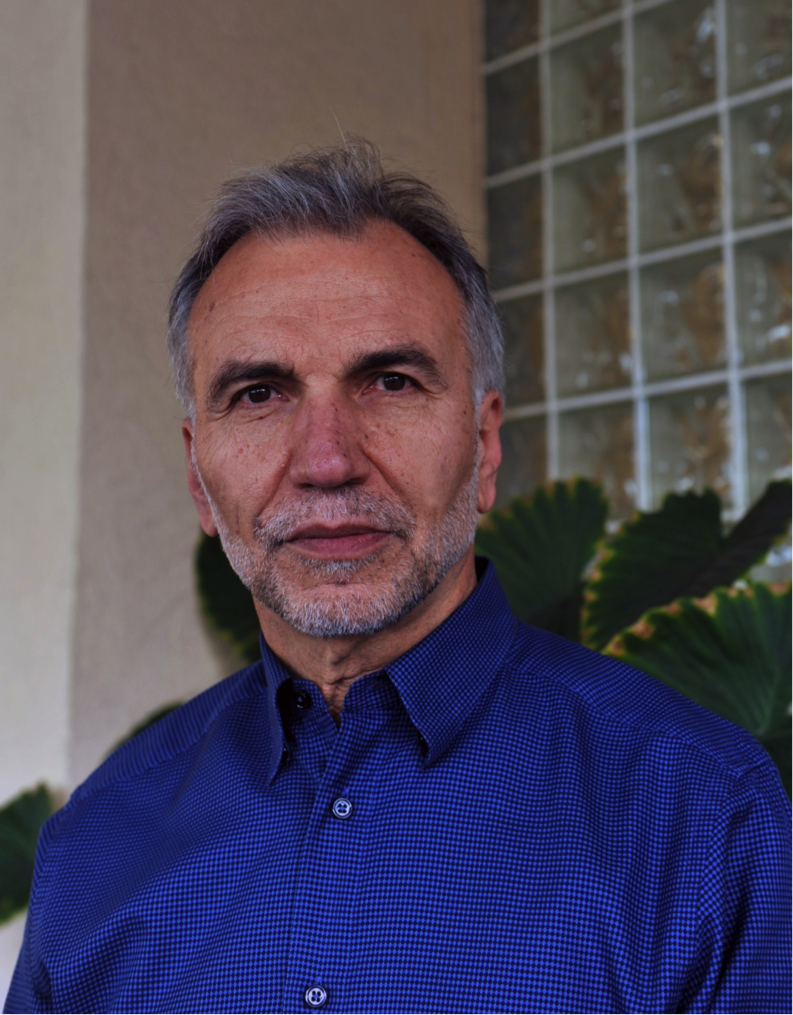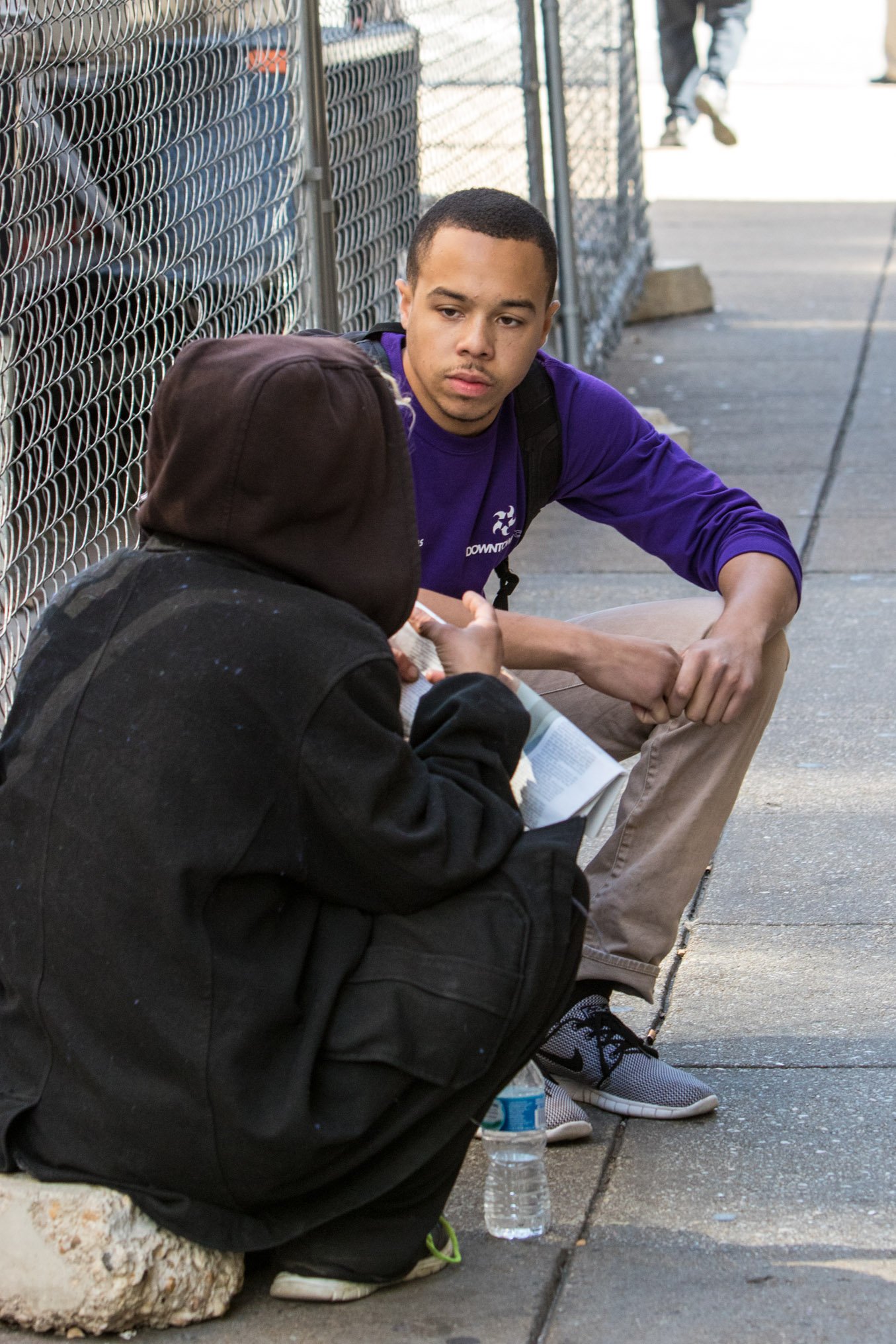For 20 years, Anthony Hopkins slept on the sidewalks of Washington, D.C., occasionally stopping by his mother’s for a shower or visiting a drop-in center for a bite to eat.
Hopkins — no relation to the actor by the same name — lived day to day, struggling to manage his mental illness and substance use disorder. He assumed finding permanent housing was a fantasy.
An apartment seemed like a rare reward for the few homeless folks who managed to get sober, get a job, or fulfill other complicated requirements — and then were lucky enough to find vacancies in supportive housing sites.
Take Action: Call Your Member of Congress on Foreign Aid
So he didn’t worry about the future, only his present realities.
“The simple fact is: if you don’t have a place to live, you don’t worry about a job or setting goals or your responsibilities,” Hopkins told Global Citizen. “You worry about where you’re going to get your next meal and if you’re going to wake up the next morning.”
But in 2008, the director of the drop-in center asked Hopkins: “Are you tired of being homeless? Are you tired of living on the street?”
The answer was a no-brainer.
The man told Hopkins he could have a permanent apartment without jumping through the usual hoops if he attended an appointment with the organization Pathways to Housing the next morning. To Hopkins, it seemed too good to be true.
Read More: 20,000 Homeless Brazilians March 20 KM to Demand Affordable Housing in Sao Paulo
“Being homeless, you hear 1,000 people telling you they can help you get housing, but they’re selling you a dream,” he said.
So he skipped the appointment — but the director tracked him down and accompanied him to the meeting.
Hopkins still lives in the apartment he got that day, but a few things have changed in the past nine years. He now shares the place with his wife and their toddler, Anthony Jr. He’s sober and has entered the workforce as a peer counselor, helping others cope with homelessness.
Housing, Hopkins said, enabled him to organize his life, get clean, and start a family — three accomplishments that seemed inconceivable when he was sleeping outside the Washington Wizards’ arena or in the doorway of a vacant office building.
“Housing changed me tremendously,” he said. “I was lost and it made me a better person.”

Read More: Natural Disasters Makes 14 Million People Homeless Each Year, Reports Show
The manner in which Pathways to Housing simply gave Hopkins an apartment, no strings attached, may sound radical — especially to those who have dealt with other systems that incrementally make housing accessible after lengthy stays in shelters or transitional housing facilities.
But Hopkins’ experience is not unique — it just puts housing first.
By giving Hopkins a permanent place to live, Pathways to Housing enabled him to focus on improving other parts of his life.
That’s the basic idea behind the Housing First approach to ending homelessness. It’s a strategy that has spread from New York City to Scandinavia and from Australia to Argentina, since it was developed by psychologist Dr. Sam Tsemberis in 1992, the same year he founded Pathways to Housing in New York City.
While the approach may sound intuitive, homelessness is often perceived as a shameful personal failing or a natural consequence of severe mental illness, and that stigma has helped give rise to a series of complex requirements that homeless people are mandated to meet before being given housing.
The Housing First model bypasses such stigmas and tackles homelessness at its most basic level — a simple lack of a roof over one’s head.
Read More: LA Students Are Building Tiny Houses for People Experiencing Homelessness
As housing costs increase and incomes stagnate around the globe, homelessness is getting worse.
The number of homeless people in France increased by nearly 50% between 2001 and 2012 and in Germany, the total homeless population rose by 35% between 2012 and 2014.
In Australia, more than 105,000 people, or one in 20 Australians, are homeless. The number of people who accessed homeless services increased by 14% between 2013 and 2016.
Homelessness is also on the rise throughout Brazil’s biggest cities. Earlier this month, 20,000 homeless residents of Sao Paulo demonstrated to demand more affordable housing. According to the Sao Paulo government, the number of people sleeping on the streets nearly doubled between 2000 and 2015.
Read More: Young Australian Boy Makes Care Packages for the Homeless Using His Own Pocket Money

In particular, people with severe mental illnesses — the population Tsemberis had in mind when he developed the “Housing First” approach — are at high risk of becoming chronically homeless. They often lack the capacity to comply with the various requirements of temporary shelters or treatment programs that could eventually lead to housing, Tsemberis said
“What’s frustrating about homelessness is you can solve it right away. It’s not like you need to develop a cure,” Tsemberis told Global Citizen. “There is so much evidence showing how Housing First works, but it takes political will.”

Pathways to Housing provided permanent, independent apartments with on-site social service support to 242 homeless New Yorkers in 1993. The organization and Tsemberis then tracked their housing situations for five years in a longitudinal study. They found that 88% of the Housing First participants remained in permanent housing, compared to just 47% of homeless people who went through New York City’s incremental residential treatment programs. The study demonstrated not only that the city could end homelessness but that people with severe mental illness could assimilate into the community — if they had access to housing, Tsemberis said.
Gradually, Tsemberis’ approach has caught on around the world, though few countries have taken the model to scale.
Finland, Norway, and Denmark have all demonstrated their commitment to implementing the Housing First model because they take “the idea that housing is basic human right very seriously,” Tsemberis said.
Finland has nearly ended street homelessness by funding permanent housing programs. The Nordic nation has reduced the number of emergency shelter beds in the entire country to just 58.
In the US, three states — Virginia, Delaware, and Connecticut — along with 51 large communities, including Houston, Texas and Philadelphia, Pennsylvania, have ended veteran homelessness altogether thanks to permanent housing programs for the chronically homeless. Across the nation, the population of homeless veterans decreased by almost half between 2010 and 2016 — though 40,000 homeless vets remain on the streets.
Read more: Bride Who Canceled Her $30K Wedding Donated the Entire Reception to the Homeless
Global Citizen campaigns on the United Nations’ Sustainable Development Goals including goal number 11, Sustainable Cities and Communities, which calls for “access for all to adequate, safe and affordable housing and basic services.” You can take action here.
In September, French president Emmanuel Macron announced his commitment to funding 50,000 permanent apartments, which would immediately house chronically homeless people.
Since her election in 2015, the mayor of Madrid, Spain has committed to building permanent housing instead of temporary shelters for those living in the Spanish capital’s calles. In September, she announced the development of 135 new units and Tsemberis tweeted that the Spanish capital is on pace to end street homelessness by 2020.
In comparison, about 60,000 homeless people still rely on the New York City municipal shelter system every night.
@MADRID destinará 135 pisos @emvsmadrid para erradicar el #sinhogarismo crónico con el programa #HousingFirstMadrid. #LaVueltaAlDía 88.6FM pic.twitter.com/atslJtZcmm
— Emisora Escuela M21 (@M21madrid) September 26, 2017
Read more: This Girl Captures Beautiful Photos of the Homeless — and She’s Just 17
In Canada, where at least 235,000 people experienced homeless in 2016, cities and provinces have started turning to permanent housing as their primary strategy for ending homelessness based on the results of a groundbreaking 2014 study known as At Home/Chez Soi.
The study, conducted by the Mental Health Commission of Canada, tracked more than 2,000 homeless men and women with severe mental illness in five cities for two years. Half of the participants immediately received apartments and the other half completed treatment as usual (TAU) social services, which included stays in shelters and transitional housing programs that did not guarantee access to permanent housing.
In the last six months of the study, 84% of the Housing First participants remained housed while just 54% of the TAU participants remained housed. Researchers also found that permanent housing cost less than traditional services partly because of a reduction in medical- and criminal justice-related expenses.
Read More: This Australian Woman Is Buying Up Houses So Homeless People Can Live in Them
The At Home/Chez Soi outcomes helped convince the Canadian government to implement the philosophy nationwide. Canada has since devoted more resources to programs that adopted the Housing First model.
Various other countries, including New Zealand and Brazil, have begun introducing permanent housing programs as solutions to street homelessness. And a delegation from Tokyo recently visited the Pathways to Housing office in Washington, D.C. to learn about the practical implementation of the model, said the agency’s director Jeremy Weatherly.
So there is hope that the Housing First model will continue to be more and more widely adopted across the world. The Housing First model could achieve particular success in developing countries that have not yet created social service systems that offer permanent housing as a potential reward down the road, Tsemberis said. Chronically homeless individuals tend to cycle through these traditional systems without achieving stable housing, he said.
The United Nations considers housing a human right. Homelessness is just the most visible manifestation of economic and social policies that exacerbate worldwide poverty and inequality — “the very tiny tip of a much larger iceberg” Tsemberis said.
We need to rethink the way we see housing if we want to achieve a safe & healthy living environment for all #Right2Housing#MakeTheShiftpic.twitter.com/k1RKzOl6T1
— United Cities (@uclg_org) November 9, 2017
Read more: These 2 Homeless Men Became the Unlikely Heroes of the Manchester Tragedy
Tsemberis said Global Citizens can start to address homelessness by recognizing the discomfort we feel when we encounter a homeless person. That discomfort is an indication that homelessness is unnatural and inhumane, he said.
“I do believe that all of us sacrifice part of our humanity by being able to walk past a homeless person,” Tsemberis said. “It goes against human instinct. You have to shove a piece of yourself down to walk by someone who is suffering in the street.”
“We owe it to them,” he continued. “And we owe it to ourselves to restore a sense of community and humanity.